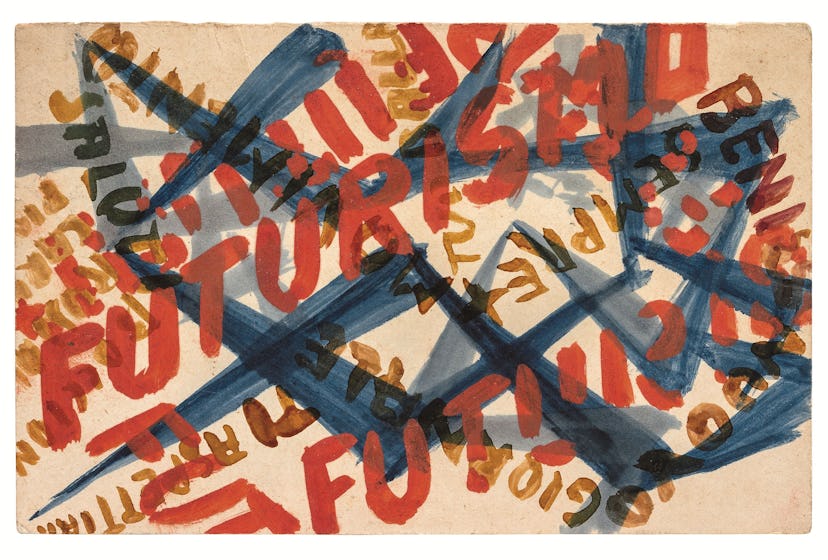Arte Non-Povera

At the recent London auctions, the Christie’s and Sotheby’s Italian sales brought in a combined $129.3 million—a record for Italian modernism, and just the latest peak in its steady market surge over the last few years. Which might be why New York galleries have offered up a slew of shows of late built around the work of postwar Italian artists like Lucio Fontana. He is in fact represented in Painting in Italy 1910s – 1950s: Futurism, Abstraction, Concrete Art, a new group exhibition at Sperone Westwater in the Lower East Side, but the show isn’t entirely representative of what collectors have been buying up in droves—it goes back little farther, to the early 20th century, when Italy’s painters made the first fitful, fateful move toward abstraction.
“Painting in Italy 1910s – 1950s: Futurism, Abstraction, Concrete Art” is on view through December 22 at New York’s Sperone Westwater, 257 Bowery.
Photos: Arte Non-Povera
Giacomo Balla, “Futurismo, Futurismo,” (“Futurism, Futurism”), Postcard sent to F.T. Marinetti, 11 November 1914, 1914. Photo courtesy Sperone Westwater.
Giacomo Balla, “Compenetrazione Iridescente,” (Study for Iridescent Interpenetration), 1912/13. Photo courtesy Sperone Westwater.
Lucio Fontana, “Studio per decorazione spaziale,” (Study for Spatial Decoration), 1952. Photo courtesy Sperone Westwater.
Enrico Prampolini, “Apparizione biologica,” (Biological Apparition), 1940. Photo courtesy Sperone Westwater.
Atansio Soldati, “Il Doppio,” (The double), 1948. Photo courtesy Sperone Westwater.
Ettore Sottsass, “Senza Titolo,” (Untitled), 1947. Photo courtesy Sperone Westwater.